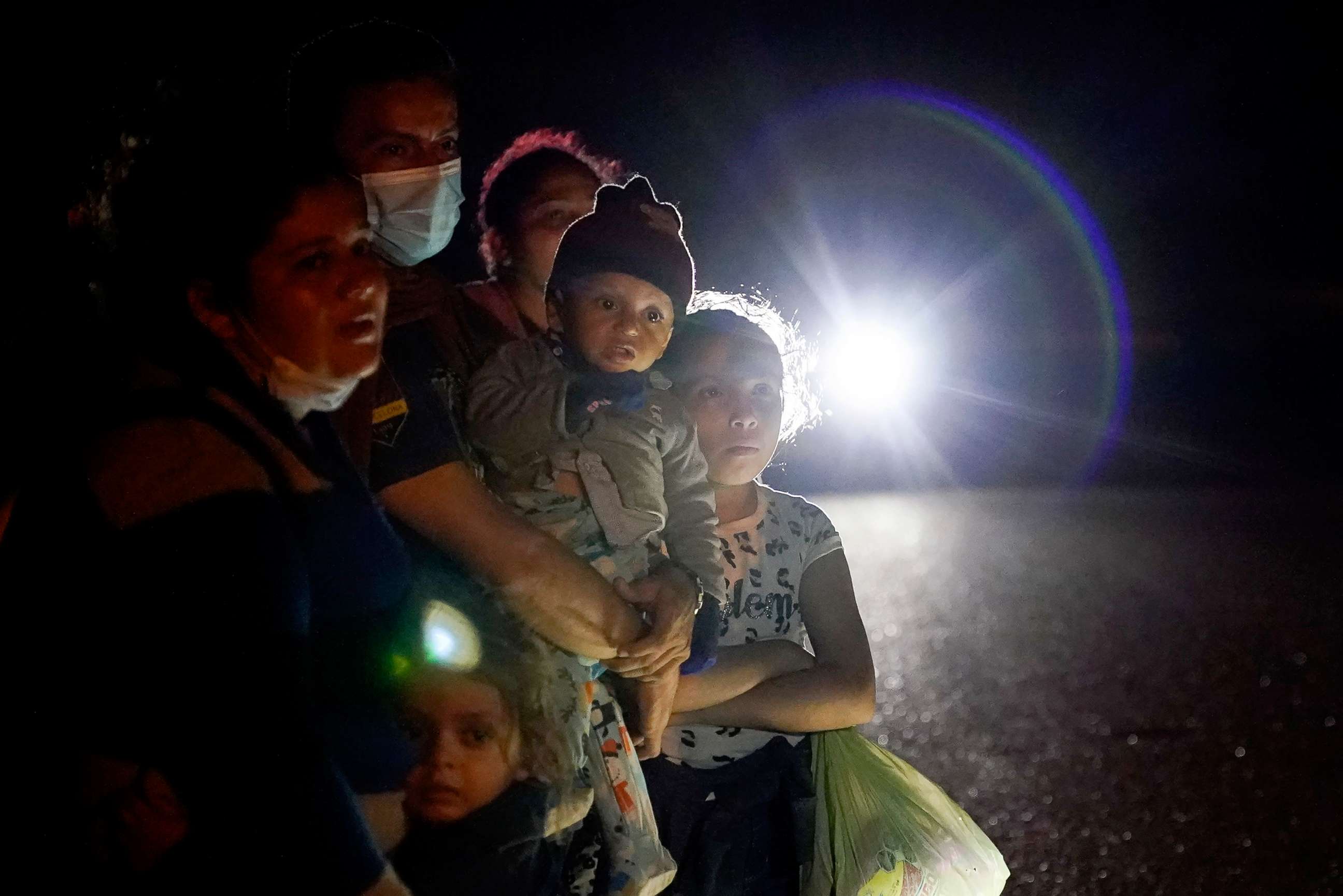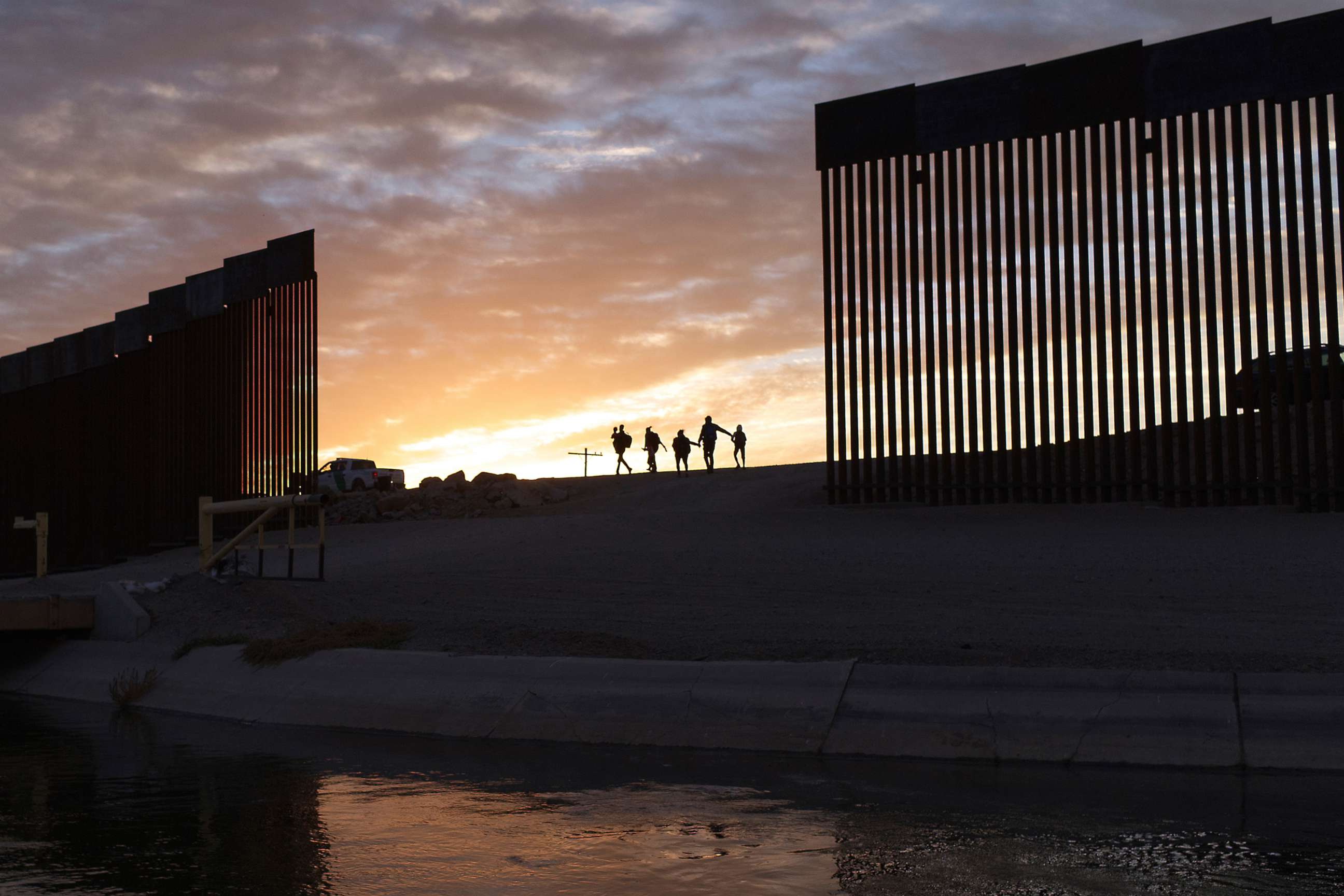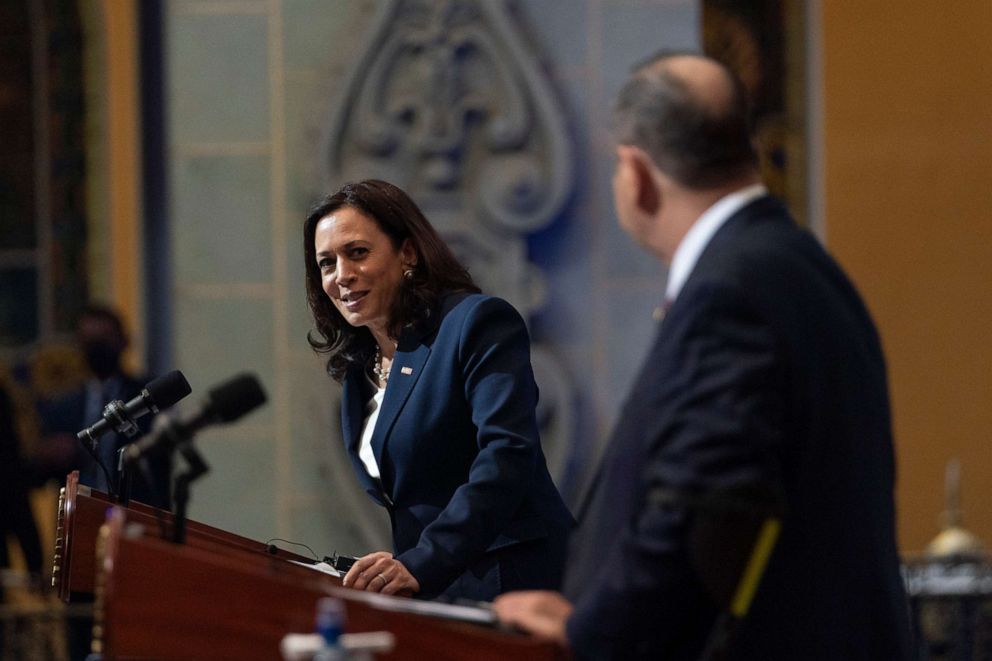Crisis at the border: How it happened and what is being done
The number of arrests at the border are the highest in two decades.
When President Joe Biden took office in January, there was an expectation that changes to policies on the southern border would help reverse the crisis there.
But what resulted was a surge in arriving migrants, some believing that Biden's friendlier approach toward immigration compared to his predecessor, former President Donald Trump, would make the end result of the arduous process easier.
In addition, hopes of reuniting families of children separated by Trump's controversial separation policy have also been slow-going and the issue of immigration generally has been a source of contention for the new administration.
Illustrating the turmoil is a dramatic surge in unauthorized U.S. southern border crossings. There were 180,000 just last month, according to U.S. Customs and Border Protection -- a two-decade high and a 76% increase since February.
During the Trump administration encounters with migrants were lower with monthly totals peaking at nearly 150,000, according to U.S. Customs and Border Protection data, overwhelming immigration authorities and leading to overcrowding at Border Patrol facilities. The Biden administration has handled the elevated volume through combination of efforts including the transformation of ICE detention facilities into rapid processing centers and the expansion of migrant child care facilities.
Changing demographics of migrants and recidivism
Biden administration officials have underscored the elevated rate of repeat offenders as well as the shifting demographics of those coming across.
The number of single adults increased from April to May by about 10,000 while the number of families and children declined, according to CBP data. Adults are often easier to repatriate while children pose additional challenges of care, education, housing accommodations and health care needs.
Recidivism was also up with 38% of those arrested or detained in May having tried to cross at least one time before in the past year. That's up from an average one-year recidivism rate of 15% between 2014 and 2019.
A majority of those who made illegal crossings were sent back immediately or "expelled" under the controversial "Title 42" process. The order, critics say, drastically cuts access to humanitarian programs for asylum seekers and incentivizes families to send their children across the border alone as it facilitates the return of migrants, including families, to Mexico in a matter of hours. Children have been exempt from the rapid removal protocols since a November court ruling last year forced the Trump administration to stop sending them back.

"The large number of expulsions during the pandemic has contributed to a larger-than-usual number of non-citizens making multiple border crossing attempts, and means total encounters somewhat overstate the number of unique individuals arriving at the border," CBP said in a recent statement.
Some success but challenges remain
As a result of the Biden administration's efforts to reunite children in U.S. custody with families and sponsors, the number of minors in Department of Health and Human Services Office of Refugee Resettlement care has dropped from about 23,000 to about 16,000 in recent months.
The numbers remain at record levels compared to previous years, but the administration has opened a series of emergency sites to handle the intake and processing and give children a safe, clean place to stay before they are matched with sponsors.
Not all facilities have met government standards, however. One center in Houston was shuttered for failing to comply with federal guidelines. Sources familiar with the facility's operation said the girls housed there, aged 13-17, were at times instructed to use plastic bags for toilets because there were not enough staff members to accompany them to restrooms.
Until its closure, the Houston facility had been run by a local nonprofit with no prior experience housing unaccompanied migrant children.

So far, the HHS facilities designed to alleviate crowding in Border Patrol stations have not been met with the pushback that accompanied them under the Trump administration. Sen. Bernie Sanders, I-Vt., referred to some government facilities as "racist child prisons" when the prior administration moved to house children at an Army based once used as an internment camp for Japanese Americans in World War II.
Changes and clearing the backlog
One of the principal issues is a major backlog in processing deportation cases, including for those who may be eligible for asylum. According to researchers at Syracuse University there are more than 1.3 million pending cases as of May 2021, a number which has steadily grown since the late '90s.
U.S. Citizenship and Immigration Services (USCIS) under the Biden administration updated expedited criteria policy allowing individuals with urgent humanitarian needs to move through the system faster.

The agency also reinstated its policy of allowing immigrant applicants, including those seeking asylum, to be notified of disqualifying elements in their applications and make corrections.
This is a reversal of a Trump-era policy that allowed for immediate cancellation of applications with errors without notice. Green card applicants can now get a work permit for two years instead of one before needing to reapply.
USCIS is also working to build operating capacity with fewer COVID-19-related restrictions.
High-traffic application support centers, where people go to get fingerprinted, are open for extended 12-hour periods after many were shuttered during the pandemic. USCIS is also allowing applicants to skip re-submitting biometric data if that information is already in the system. The measures have led to a 33% reduction in the wait queue for applications, according to one Biden administration official.
'Do not come'
Vice President Kamala Harris, who has the border as part of her portfolio, recently announced during a trip to Guatemala and Mexico task force groups for smuggling, trafficking and corruption, assistance for housing and entrepreneurs and a $40 million young women's empowerment initiative.
Yet benchmarks, timelines and exact goals of the programs remain vague and apparently long-term. Harris also took the opportunity to issue an urgent-sounding message to those planning migration.

"I want to be clear to folks in this region who are thinking about making that dangerous trek to the United States-Mexico border: Do not come. Do not come. The United States will continue to enforce our laws and secure our border. There are legal methods by which migration can and should occur, but we, as one of our priorities, will discourage illegal migration. And I believe, if you come to our border, you will be turned back."
The vice president's comments were widely criticized as insensitive to real asylum claims, which migrants have legal rights to initiate upon arrival in the U.S. even if the means of arrival are unlawful.
In a gaggle with reporters on the tarmac in Guatemala City earlier this month, Harris defended her message to migrants.
"I'm really clear we have to deal with the root cause," she said. "And that is my focus. Period."
ABC News' Ben Gittleson and Molly Nagle contributed to this report.




